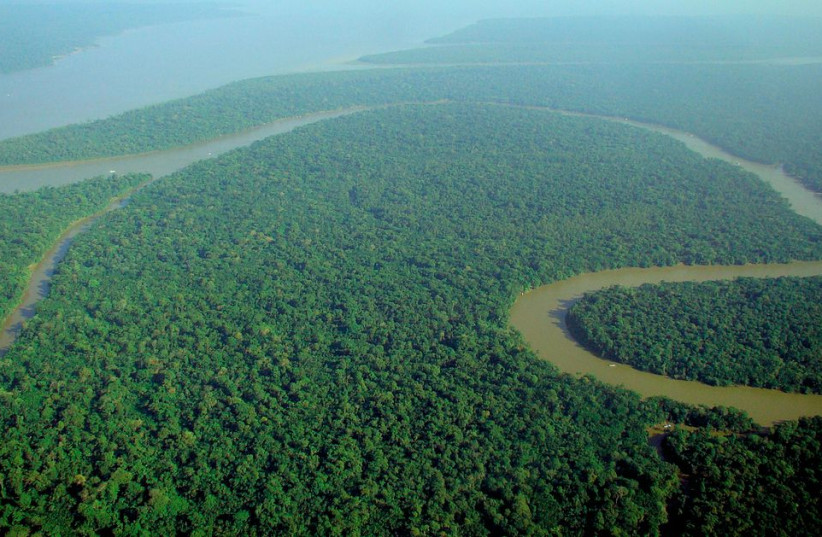The fertile Amazonian dark earth that makes up some of the soil of the Amazon River Basin in South America might not be a natural phenomenon, but rather is the result of the agricultural work of indigenous peoples going back thousands of years, according to findings presented at the American Geophysical Union meeting in December.
Also known as terra preta, the dark earth has been a unique characteristic of the soil in the Amazon Basin.
Theories have abounded about why this type of soil exists at all for years, but this recent research, which has not yet been peer-reviewed or published in a journal, may shed light on the practices of ancient indigenous peoples living in the Amazon.
What is dark earth, the fertile soil of the Amazon River Basin?
Dark earth gets its name for being very dark in color. Found in the Amazon River Basin, the soil itself gets its color from charcoal, which exists in high concentrations within the soil itself.
Charcoal isn't the only component, however. Other notable ingredients within dark earth include a number of organic ingredients like feces, bones and plant residue; certain nutrients like calcium, zinc and phosphorus; and tiny shards of pottery.
After it was discovered, many wondered how this type of soil was able to form.

Some argued that the Amazonian dark earth may have formed naturally. Early theories included residue from volcanic ashfall from the Andes Mountains and sedimentation from nearby lakes or ponds.
However, another major theory was that it was formed naturally as an accidental consequence of human action.
Essentially, the idea is that the existence of charcoal, animal bones, plant waste and pottery shards could have all just naturally accumulated in the soil near one's living area as a byproduct of food preparation.
No one disputes that the ancient indigenous inhabitants of the Amazon River Basin made use of dark earth for farming. There is plenty of archaeological evidence supporting this, such as ancient sites located near dark earth.
The question, however, has always been if the soil was a natural occurrence or was intentionally manufactured.
But this new research seems to imply the ancient Amazonians may have deliberately manufactured dark earth, rather than it being a simple natural occurrence.
In 2018, researchers visiting the Kuikuro people in Brazil – many of whom still live in villages among themselves, such as in Xingu National Park – discovered that these indigenous people actually make dark earth around their villages.
So, as the presentation noted, the fact that the Kuikuro can make dark earth today seems to be a likely argument that other indigenous people were making it throughout history, Science News reported.
This isn't exactly a new discovery though, and many researchers have argued that Amazonian dark earth was intentionally developed thousands of years ago. According to University of Exeter archaeologist Jose Iriarte in 2020, the Amazonians had been working to modify their environment for 2,000 years, thanks to the arrival of the Poco and Santarem cultures in Brazil, as reported by Archaeology magazine.
This is important because the soil in the Amazon is otherwise not very fertile – as is often the case with tropical forests. As a result, the only way to have such massive agriculture needed in ancient times to form thriving civilizations would have been through making the soil more fertile, such as through dark earth formation.
Why Amazonian dark earth matters for climate change
But this also matters for another reason, and that would be climate change.
As the researchers behind the recent presentation noted, dark earth also stores carbon, which makes sense since charcoal is basically mostly carbon. And it can store massive amounts of it.
Regarding the Xingu region of Brazil, according to the presentation, there seem to be nine megatons of carbon, the equivalent of a small industrialized nation's annual carbon emissions, that could be stored in the dark earth, Science News reported.
If one takes into account the entire Amazon River Basin, which itself is absolutely massive in size, then there's no telling just how much carbon could be stored.
What this means is that carbon that would otherwise be emitted into the atmosphere is instead being kept in the soil, where it is used in agriculture instead of as a pollutant.
With that being the case, could dark earth not also be used in other places to help store carbon emissions, which are the main contributor to the ever-worsening climate change?
That's exactly what the researchers behind this presentation are wondering too. But further research would be needed to figure that out.
